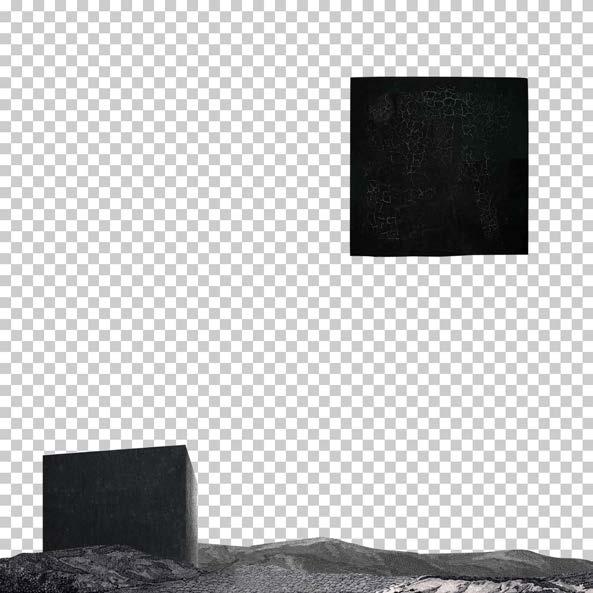
7 minute read
GREYSCAPES
WAI Architecture Think Tank
Advertisement
WAI Architecture Think Tank is an international studio practicing architecture, urbanism and architectural research. It was founded in Brussels in 2008 by Puerto Rican architect, artist, author and theorist Cruz Garcia and French architect, artist, author and poet, Nathalie Frankowski. WAI and its parallel artist practice Garcia Frankowski oscillate between Roanne, Beijing, San Juan and several American cities. Cruz Garcia and Nathalie Frankowski are former Visiting Teaching Fellows at the School of Architecture at Taliesin, Hyde Chairs of Excellence at the College of Architecture at the University of Nebraska-Lincoln and the current Ann Kalla Visiting Professors at Carnegie Mellon University. They are also founding curators of Intelligentsia Gallery, an alternative art space in Beijing.

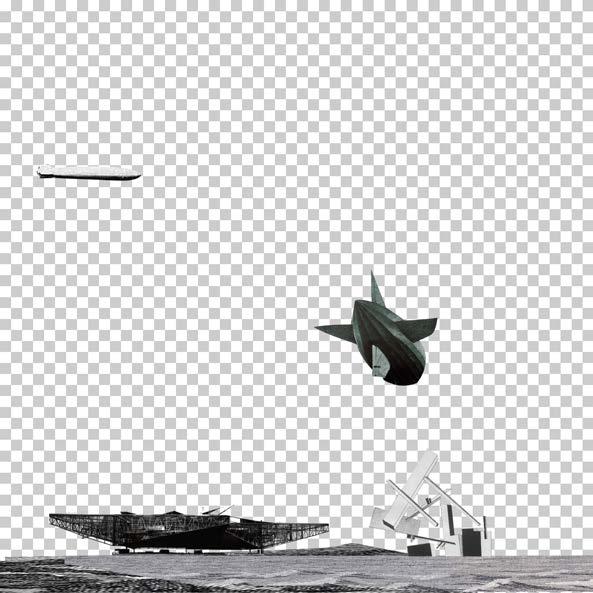
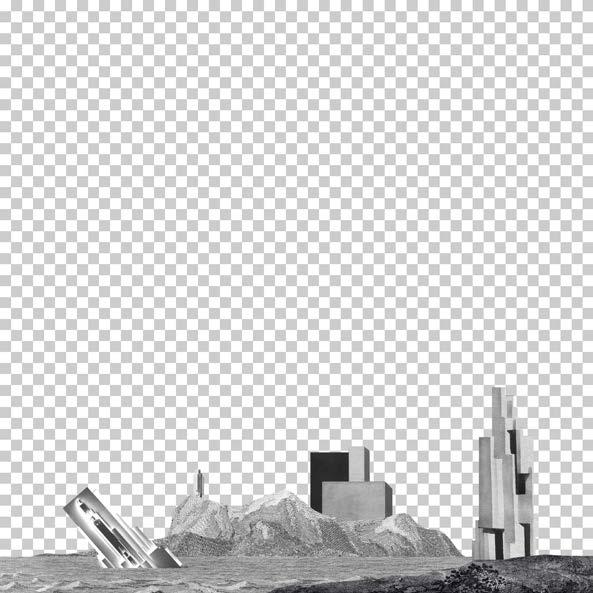
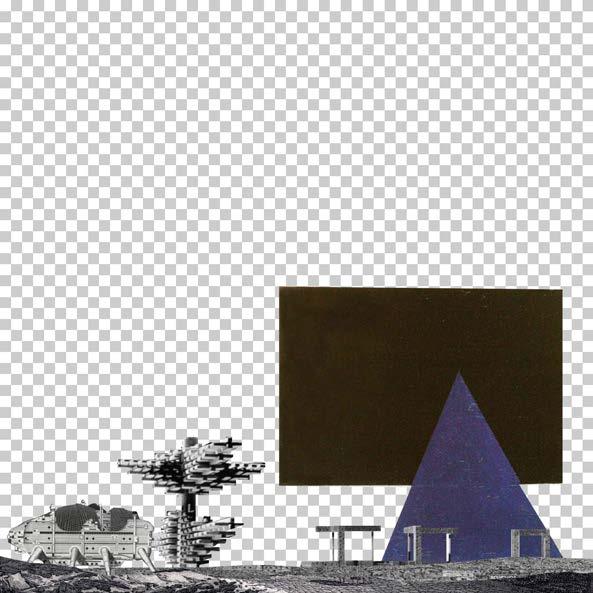



Greyscapes © WAI Architecture Think Tank
Greyscapes are born out of a Malevich’s dream. As a perpetual novelty, they achieve what the Back Square intended: a perennial new beginning. A flawlessly flat surface combining white and grey squares (Suprematism’s geometric tool of choice); these Greyscapes are ultimate non-objectivity: non-objects with no clear objective. Devoid of symbolism, allegory or meaning, they occupy the semiotic vacuum opened by Suprematist fervour. Greyscapes are meaningless images.
Although composed of empty space, the Greyscape operates as the opposite of an installation: diverting the sight out from the space and back into the objects displayed in it. A new form of Nothingness, Greyscapes are all that is left when both content and concept are scrapped-off the monitor. Greyscapes are the modernist dream of tabula rasa living in a digital void. Greyscapes are post-digital Black Squares.
Greyscapes lie deep inside any PSD, PNG or TIFF file. As a perpetual sign of incompleteness, Greyscapes are ready to disappear once a picture has been rasterized for consumption. Greyscapes are the original visual encounter of a contemporary visionary, futuristic artist, and utopian designer. Greyscales are what they see before altering the world in their computer screen. The power of the Greyscape lies in what is not there yet. Greyscapes are pure potential. Greyscapes are images that will become.
Like the universe, Greyscapes are boundless; their expansion infinite. However, contrary to far away galaxies and dark matter, Greyscapes don’t occupy any part of the collective interest. Greyscapes are a galaxy overlooked. A planet of gradients left unexplored. Greyscapes are a Big Bang of architectural representation: an abstract start with unforeseeable futures.
A perfectly balanced array of monochrome patterns, Greyscapes are grey, white, grey, white, grey, white, grey, white, grey, white, grey, white, grey, white, and grey and white ad infinitum. Colour Field without colours, Greyscapes achieve complete erasures without recurring to Richter’s scrapping, Fontana’s slashing or Miro’s burning. Greyscapes are Land Art in the realm of pixels, full territories rigorously rearranged by form and (dis)placement. Greyscapes are the silence in Agnes Martin’s canvas, minimalism in Carl Andre’s patterns.
Of accurate exactitude, the Greyscape remains intact in the era of image overflow, instant updates and flashing newsfeed. Like Suprematism post-internet, Greyscapes are exhilaratingly neutral in front of terabytes of visual paraphernalia. Just like in The Man without Qualities where Ulrich was confronted with a world of changing values, the Greyscape is challenged by constantly changing images. Perpetually indifferent to either high resolution or poor images, Greyscapes don’t rely on changing attributes or particular characteristics. Greyscapes are images without Qualities. The Greyscape marks a revolution in the history of collage-making. Greyscapes are Nihilism at the reach of Ctrl+Z; Nothingness of? a system-crash away. The Greyscape is the visual consummation of the avant-garde’s desire of negation. If Debord affirmed that Dada negates art without realizing it, and Surrealism realizes art without negating it, the Greyscape, simultaneously Dadaesque and Surrealist, can always negate after the realization. A surface for self-negation, the Greyscape is always luring under juxapositions and assemblages. The Greyscape is the apotheosis of the Situationist collage: Under the pavement, the Greyscape.
Medium
Mostly treated as a medium, Greyscapes can also be ends in themselves. An exercise on imaginative speculation reveals the multiple inherent possibilities of Greyscapes. As an ever expanding field of squares, Greyscapes can be Archizoomesque diagrams for total urbanization.
Following Joseph Albers studies of what he called grey steps, scales and ladders to demonstrate gradual stepping between white and black; between lighter and darker, Grayscapes can be studies of the perpetual stepping between absence of content and visual output. In the form of a Nolli-Plan, each white square in the Greyscape could signify a vacant, light square for every occupied, grey block in a strategy for the even covering of the field.
If left in its state of incompleteness, the Greyscape can be the terminal form of architectural subtraction: the removal, masking, erasure of layers of history, matter, pixels and visual content to reveal the unaltered white and grey grid. These Greyscapes can be avatars of many of architecture’s and urbanism’s deepest desires: Superstudio’s Continuous Surface expanding over open fields, a Corbusiean Plan based on the poem of the square angle taking over the center of Paris, Situationist sectors awaiting activation by Homo-Ludens obsessed with Cartesians, an immaculate Cardo Decomanus always on Axis, patches of hyper industrialized farmland taking over the surface of the Earth, the Broadacre City of Broadacre Cities.
In its uncompromising indifference, the Greyscapes are landscapes of possibilities. A domain of unlimited shared commons, Greyscapes are a collage’s utopia. Stripped out of any sign of ideology, the Greyscape offers a space in which totalitarian and egalitarian forms can coexist. Greyscapes are a space for the cohabitation of the real and the fantastic. Where else can Magritte’s Castle of the Pyrenees float above Piranesi’s ruins? What land could anchor Architectons of different generations? Where could Orwell and Mies, Kabakov and Ledoux, Isozaki and Archigram share space without impacting the geopolitical land? Where could architecture exist without the threat of gentrification; without giving a form to the accumulation of wealth?
Politics
Greyscapes are an unorthodox alternative to the current state of architectural paraphernalia. Evidently fictional, Greyscapes seize architecture from the commercial character of the corporate rendering, and the anesthetizing imitation of the romantic painting. By not showing any ‘real’ physical context, the Greyscapes confront the ethics of architectural simulacra and its spell of faux realism. Greyscapes are an alternative to photorealistic images that avoid depictions of class,environmental struggle and other issues as architectural as facades, space and structure, and as a contextual as the physical site of the project.
Adopting the indifferent vocabulary of the quintessential Photoshop workspace, the Greyscape challenges the imperative of images to deliver what scale models in their formal abstraction and drawings in their technical characteristics could not. In their operative function, Greyscapes offer both a radical escape and an ideological critique to the function of images in architecture. Greyscapes are critical theory in the realm of images.
Although aesthetically similar to the pixelation of pubic hair and sexual organs applied to circumnavigate the Japanese law against the distribution of obscene objects, and to the multi-scale patterns adopted by the military to disguise uniforms, tanks and rockets, the Greyscape is a form of inverted camouflage: enhancing the focus on architectural artifacts and exposing them as autonomous objects or as systems of autonomous objects. Ready to disappear once new content has been assembled, the Greyscape is the chroma key of architectural representation.
Because of their lack of pretention, Greyscapes exacerbate the distancing effect of architectural images that don’t aspire to be more than images. Greyscapes are images without ambition. Greyscapes create a safe space between the critical stimulation of architectural speculation, and the political and economic imperatives of a visual simulation. The Greyscape in its pure form liberates the image, and allows it to become structure, content and a source for the production of an architectural subjectivity. Greyscapes are scaffolding for concepts: extremely robust infrastructure supporting the lightest of contents.
Mirroring Hito Steyerl’s exercise of burrowing the walls of the lecture hall in search of Adorno’s Grey (a colour is assumed he used to keep his students bright and alert), the Greyscape becomes a statement for revealing. After removing layers from the Greyscapes, what is left is radical nothingness and a grid-like array of white and grey squares.
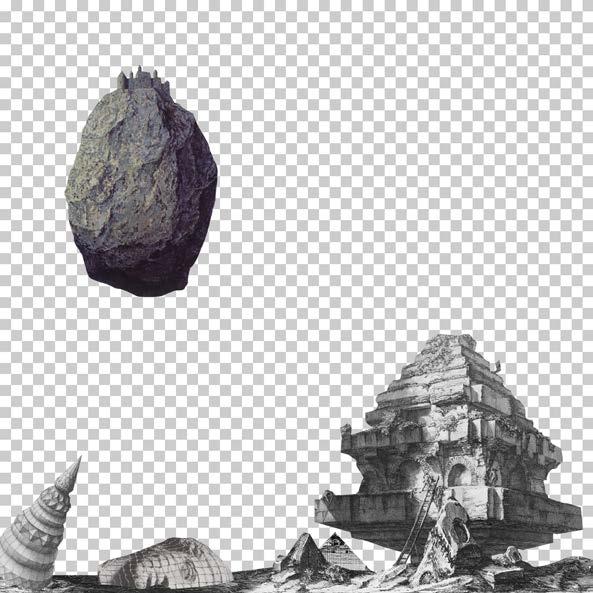
Greyscapes © WAI Architecture Think Tank
